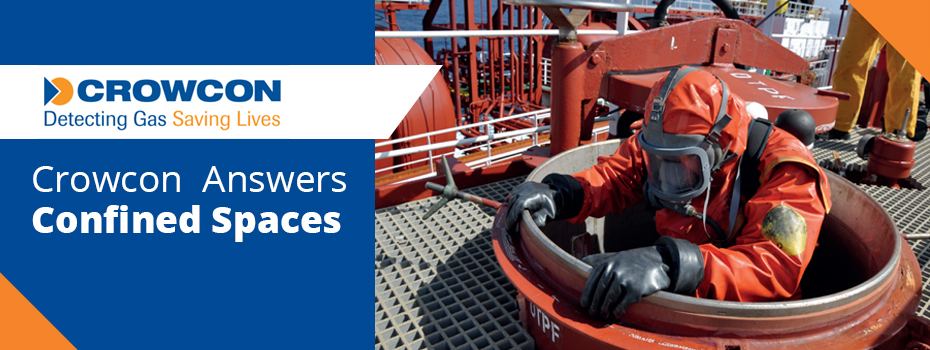 Confined spaces pose a significant hazard to workers’ lives. Recently, BBC East Midlands published a story covering a corporate manslaughter trial taking place in Leicester Crown Court. Greenfeeds Limited is charged with two counts of corporate manslaughter after two of its employees, Nathan Walker (19) and Gavin Rawson (35), lost consciousness due to high CO2 concentrations and subsequently drowned inside a tanker.[1] Seven years before this incident in May 2009, two men, Maarten Pieter Den Heijer (30) and Robert MacDonald (45), died as a result of low O2 concentrations beneath the deck of a barge moored on Loch Creran, a sea farm near Oban. Scottish Sea Farms and Logan Inglis were fined £600 000 and £40 000 respectively (these fines were later reduced to £333 335 and £20 000) for breaches of health and safety regulations such as failing to train staff for working in confined spaces like the sealed chambers present on the Loch Creran barge.[2] Approximately 15 people in the UK lose their lives due to accidents in confined spaces; this number includes fatalities resulting from failed rescue attempts.[3] Therefore, it is vital to understand the risks, regulations, procedures, and equipment pertaining to working in confined spaces before you or your employees undertake any work. Thankfully, Crowcon has answered several frequently asked questions about confined spaces using the information outlined in the HSE's (UK) and OSHA's (USA) documentation on the subject.[4]
Continue reading →
Confined spaces pose a significant hazard to workers’ lives. Recently, BBC East Midlands published a story covering a corporate manslaughter trial taking place in Leicester Crown Court. Greenfeeds Limited is charged with two counts of corporate manslaughter after two of its employees, Nathan Walker (19) and Gavin Rawson (35), lost consciousness due to high CO2 concentrations and subsequently drowned inside a tanker.[1] Seven years before this incident in May 2009, two men, Maarten Pieter Den Heijer (30) and Robert MacDonald (45), died as a result of low O2 concentrations beneath the deck of a barge moored on Loch Creran, a sea farm near Oban. Scottish Sea Farms and Logan Inglis were fined £600 000 and £40 000 respectively (these fines were later reduced to £333 335 and £20 000) for breaches of health and safety regulations such as failing to train staff for working in confined spaces like the sealed chambers present on the Loch Creran barge.[2] Approximately 15 people in the UK lose their lives due to accidents in confined spaces; this number includes fatalities resulting from failed rescue attempts.[3] Therefore, it is vital to understand the risks, regulations, procedures, and equipment pertaining to working in confined spaces before you or your employees undertake any work. Thankfully, Crowcon has answered several frequently asked questions about confined spaces using the information outlined in the HSE's (UK) and OSHA's (USA) documentation on the subject.[4]
Continue reading →jess
-
Crowcon Answers Confined Spaces FAQs
 Confined spaces pose a significant hazard to workers’ lives. Recently, BBC East Midlands published a story covering a corporate manslaughter trial taking place in Leicester Crown Court. Greenfeeds Limited is charged with two counts of corporate manslaughter after two of its employees, Nathan Walker (19) and Gavin Rawson (35), lost consciousness due to high CO2 concentrations and subsequently drowned inside a tanker.[1] Seven years before this incident in May 2009, two men, Maarten Pieter Den Heijer (30) and Robert MacDonald (45), died as a result of low O2 concentrations beneath the deck of a barge moored on Loch Creran, a sea farm near Oban. Scottish Sea Farms and Logan Inglis were fined £600 000 and £40 000 respectively (these fines were later reduced to £333 335 and £20 000) for breaches of health and safety regulations such as failing to train staff for working in confined spaces like the sealed chambers present on the Loch Creran barge.[2] Approximately 15 people in the UK lose their lives due to accidents in confined spaces; this number includes fatalities resulting from failed rescue attempts.[3] Therefore, it is vital to understand the risks, regulations, procedures, and equipment pertaining to working in confined spaces before you or your employees undertake any work. Thankfully, Crowcon has answered several frequently asked questions about confined spaces using the information outlined in the HSE's (UK) and OSHA's (USA) documentation on the subject.[4]
Continue reading →
Confined spaces pose a significant hazard to workers’ lives. Recently, BBC East Midlands published a story covering a corporate manslaughter trial taking place in Leicester Crown Court. Greenfeeds Limited is charged with two counts of corporate manslaughter after two of its employees, Nathan Walker (19) and Gavin Rawson (35), lost consciousness due to high CO2 concentrations and subsequently drowned inside a tanker.[1] Seven years before this incident in May 2009, two men, Maarten Pieter Den Heijer (30) and Robert MacDonald (45), died as a result of low O2 concentrations beneath the deck of a barge moored on Loch Creran, a sea farm near Oban. Scottish Sea Farms and Logan Inglis were fined £600 000 and £40 000 respectively (these fines were later reduced to £333 335 and £20 000) for breaches of health and safety regulations such as failing to train staff for working in confined spaces like the sealed chambers present on the Loch Creran barge.[2] Approximately 15 people in the UK lose their lives due to accidents in confined spaces; this number includes fatalities resulting from failed rescue attempts.[3] Therefore, it is vital to understand the risks, regulations, procedures, and equipment pertaining to working in confined spaces before you or your employees undertake any work. Thankfully, Crowcon has answered several frequently asked questions about confined spaces using the information outlined in the HSE's (UK) and OSHA's (USA) documentation on the subject.[4]
Continue reading → -
News Roundup: Police Use Thermal Cameras to Crack Cases & Save People
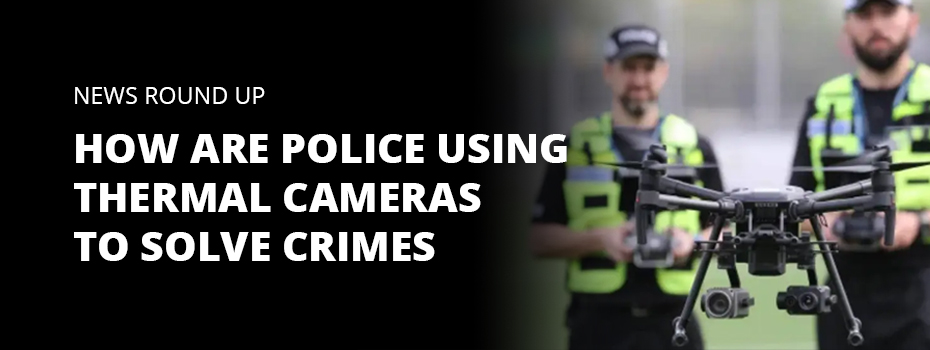 In previous News Roundups, we’ve explored how thermal imaging has been used to prevent Covid outbreaks as well as reduce carbon emissions and energy bills. Another area where thermal technology has been making a significant difference is law enforcement. Officers in the UK and USA have been using thermal cameras to uncover drug farms, corner criminals, and rescue distressed or missing persons.
Continue reading →
In previous News Roundups, we’ve explored how thermal imaging has been used to prevent Covid outbreaks as well as reduce carbon emissions and energy bills. Another area where thermal technology has been making a significant difference is law enforcement. Officers in the UK and USA have been using thermal cameras to uncover drug farms, corner criminals, and rescue distressed or missing persons.
Continue reading → -
Martindale Answers Common PAT Testing Questions
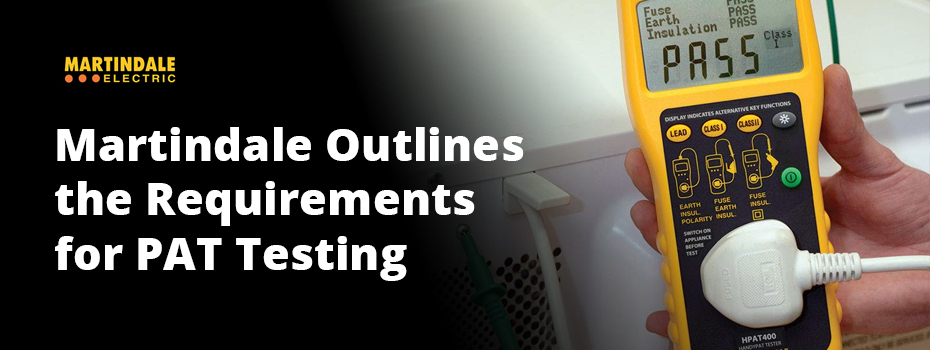 In recent blog posts, Martindale Electric’s Steve Dunning
and Paul Wilson outline PAT testing and training requirements. In doing so,
they have answered many common PAT testing FAQs. This blog summarises the information
presented by Dunning and Wilson.[1]
Continue reading →
In recent blog posts, Martindale Electric’s Steve Dunning
and Paul Wilson outline PAT testing and training requirements. In doing so,
they have answered many common PAT testing FAQs. This blog summarises the information
presented by Dunning and Wilson.[1]
Continue reading → -
Avoid These 9 Common PAT Testing Mistakes
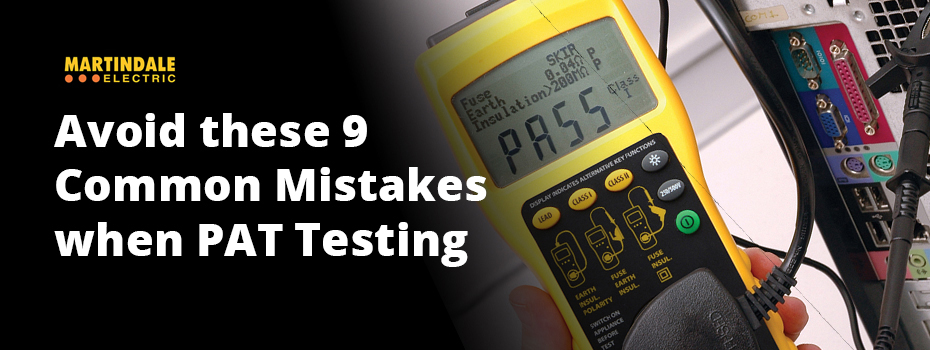 Even seasoned professionals with years of experience testing portable appliances are liable to make the occasional PAT testing mistake. Using Martindale’s guide to Basic PAT Testing Mistakes, we’ve compiled a list of nine common PAT testing mistakes to avoid.[1]
Continue reading →
Even seasoned professionals with years of experience testing portable appliances are liable to make the occasional PAT testing mistake. Using Martindale’s guide to Basic PAT Testing Mistakes, we’ve compiled a list of nine common PAT testing mistakes to avoid.[1]
Continue reading → -
Chauvin Arnoux Explain Energy Efficiency & the IET Wiring Regulations
 Julian Grant of Chauvin Arnoux published an article in the January 2022 issue of Professional Electrician & Installer explaining an emerging focus of the 18th Edition IET Wiring Regulations: energy efficiency. As energy prices rise and we continue to work towards achieving net-zero emissions by 2050, ensuring electrical installations are energy efficient is more important than ever.[1]
Continue reading →
Julian Grant of Chauvin Arnoux published an article in the January 2022 issue of Professional Electrician & Installer explaining an emerging focus of the 18th Edition IET Wiring Regulations: energy efficiency. As energy prices rise and we continue to work towards achieving net-zero emissions by 2050, ensuring electrical installations are energy efficient is more important than ever.[1]
Continue reading → -
International Women’s Day: Lillian Baumbach, the USA's First Female Master Plumber
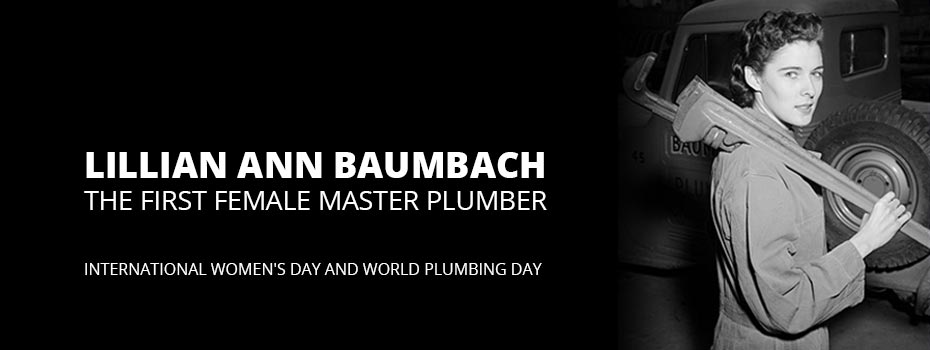 To mark International Women’s Day (8th March) and
World Plumbing Day (11th March), we’re celebrating a woman who chose
to #BreakTheBias in the plumbing industry. Allow us to introduce Lillian Ann
Baumbach, the USA’s first female Master Plumber.
Continue reading →
To mark International Women’s Day (8th March) and
World Plumbing Day (11th March), we’re celebrating a woman who chose
to #BreakTheBias in the plumbing industry. Allow us to introduce Lillian Ann
Baumbach, the USA’s first female Master Plumber.
Continue reading → -
News Roundup: Thermal Cameras Used to Reduce Energy Bills & Carbon Footprints
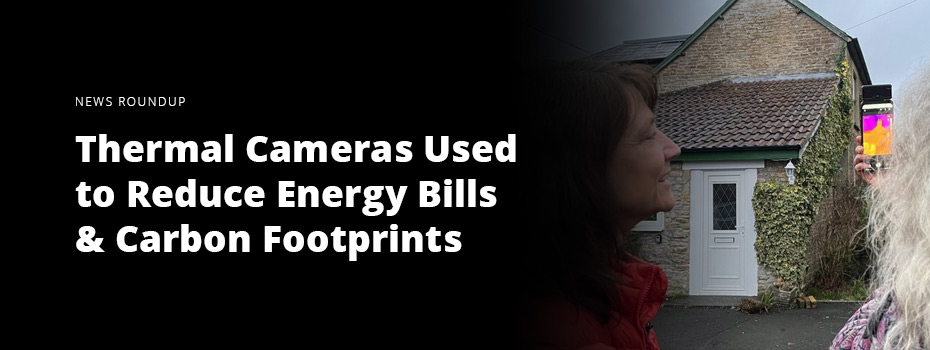 As energy prices rise and we continue to look for new ways to reduce our carbon footprints, people have been turning to thermal technology to help them insulate their homes and reduce energy costs. In January and February 2022, The Times, the BBC, and PASS all published stories about people, councils, and charities using thermal cameras to assess and address insulation issues within their homes.
Continue reading →
As energy prices rise and we continue to look for new ways to reduce our carbon footprints, people have been turning to thermal technology to help them insulate their homes and reduce energy costs. In January and February 2022, The Times, the BBC, and PASS all published stories about people, councils, and charities using thermal cameras to assess and address insulation issues within their homes.
Continue reading → -
Spot the Signs and Symptoms of Power Quality Faults
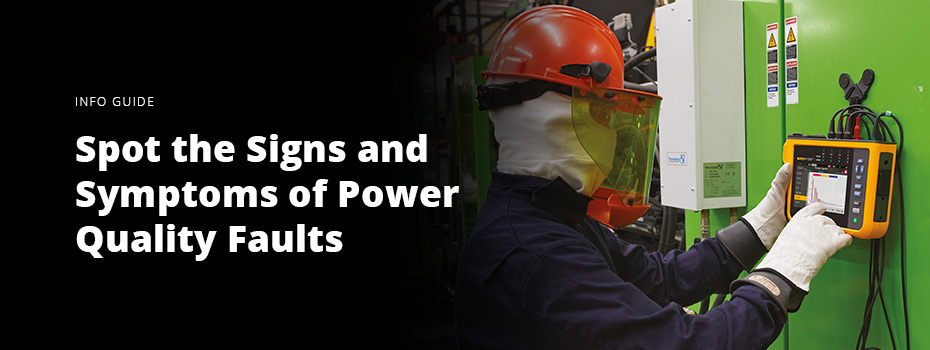 Power quality problems aren’t always immediately recognisable. Without power quality monitoring, issues within electrical distribution systems and/or faults with equipment may be misdiagnosed as, for example, an old breaker that needs to be replaced. Misdiagnosis could lead to ineffective 'corrections', for instance, resetting the equipment or circuit. Spotting the signs of power quality issues early is essential to prevent further damage to systems or equipment. Once symptoms have been recognised, you can use a power quality analyser, such as Fluke’s 1770-Series Power Loggers, to monitor loads, voltage, current, harmonics, and unbalance or disturbance patterns.[1]
Continue reading →
Power quality problems aren’t always immediately recognisable. Without power quality monitoring, issues within electrical distribution systems and/or faults with equipment may be misdiagnosed as, for example, an old breaker that needs to be replaced. Misdiagnosis could lead to ineffective 'corrections', for instance, resetting the equipment or circuit. Spotting the signs of power quality issues early is essential to prevent further damage to systems or equipment. Once symptoms have been recognised, you can use a power quality analyser, such as Fluke’s 1770-Series Power Loggers, to monitor loads, voltage, current, harmonics, and unbalance or disturbance patterns.[1]
Continue reading → -
Fluke’s Five Reasons to Monitor Power Consumption
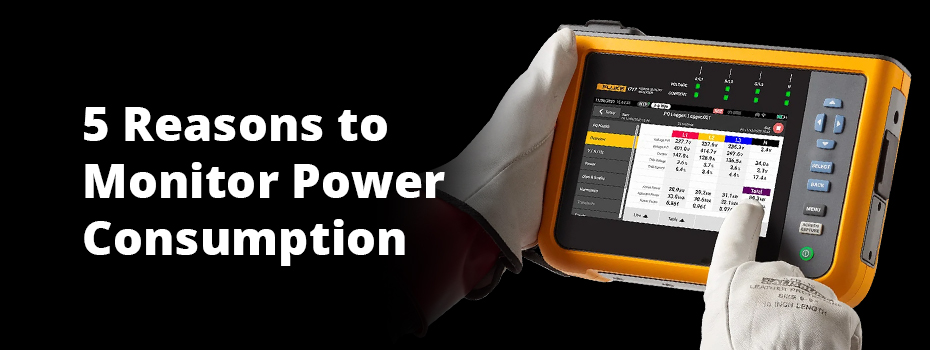 Monitoring power consumption equips you with the data needed to make important energy management decisions. Knowing your energy usage is critical to understanding the capacity of your existing electrical panel, troubleshooting circuit breaker trips, identifying energy costs, and uncovering energy waste. It can help you to maximise plant safety, decrease and verify bills while increasing energy efficiency, secure rebates and financial incentives, and locate and troubleshoot power quality issues.[1]
Continue reading →
Monitoring power consumption equips you with the data needed to make important energy management decisions. Knowing your energy usage is critical to understanding the capacity of your existing electrical panel, troubleshooting circuit breaker trips, identifying energy costs, and uncovering energy waste. It can help you to maximise plant safety, decrease and verify bills while increasing energy efficiency, secure rebates and financial incentives, and locate and troubleshoot power quality issues.[1]
Continue reading → -
Take Safe, Simple, Speedy Measurements with KANE LINK
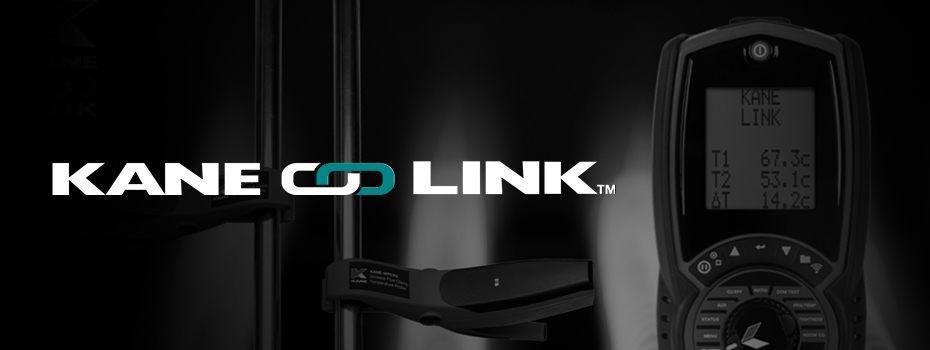 After years of research and development, KANE has created KANE LINK, a wireless interface that connects your KANE LINK-enabled 458S, 958, or 988 Flue Gas Analyser to KANE LINK probes, adapters, and monitors, allowing you to carry out measurements wirelessly and remotely. With KANE Link you don’t have to carry multiple pieces of test equipment or navigate dangerous trailing wires; results are wirelessly transmitted to your flue gas analyser, and you can send data to print or to a smartphone/tablet with the KANE LIVE app installed, enabling you to work faster, easier, and more accurately.
Continue reading →
After years of research and development, KANE has created KANE LINK, a wireless interface that connects your KANE LINK-enabled 458S, 958, or 988 Flue Gas Analyser to KANE LINK probes, adapters, and monitors, allowing you to carry out measurements wirelessly and remotely. With KANE Link you don’t have to carry multiple pieces of test equipment or navigate dangerous trailing wires; results are wirelessly transmitted to your flue gas analyser, and you can send data to print or to a smartphone/tablet with the KANE LIVE app installed, enabling you to work faster, easier, and more accurately.
Continue reading →


